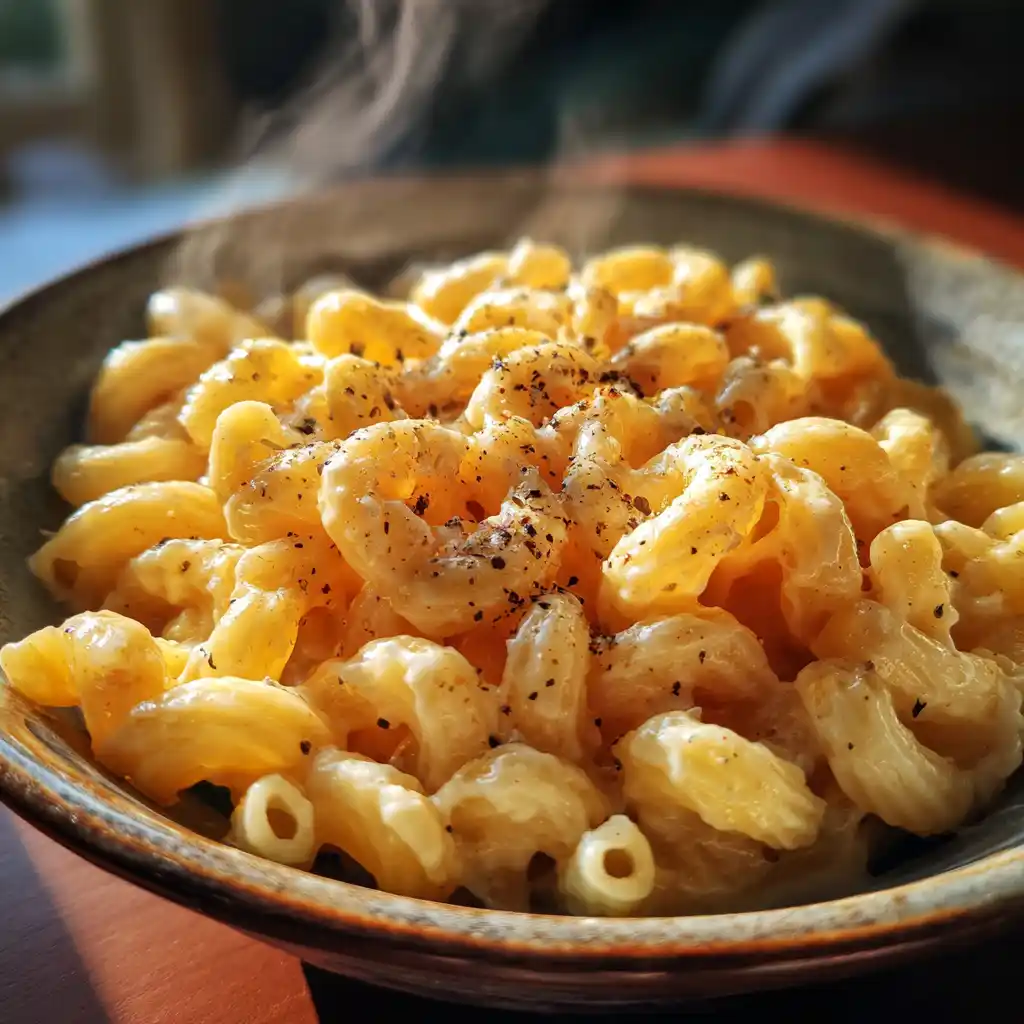Cavatappi pasta is more than just a fun-shaped noodle — it’s a kitchen staple that holds sauces like a pro and turns ordinary meals into comfort food classics. Known for its spiral, tube-like shape, cavatappi is perfect for creamy dishes, cheesy bakes, and hearty pasta salads.
My love for cooking began in a sunlit kitchen in a small coastal town, where food was more about connection than recipes. I grew up rolling dough beside my aunt and listening to my mother say, “A warm meal can say what words sometimes cannot.” That’s the heart behind this blog — cozy meals that carry stories and flavor.
In this article, we’ll explore everything from the origins and health benefits of cavatappi pasta to cooking tips, sauce pairings, and delicious recipes you’ll want to make again and again.
Don’t miss our healthy dinner ideas for more comforting meals to try tonight.
Table of Contents
What is Cavatappi Pasta?
The Origins and Meaning of “Cavatappi”
Cavatappi pasta gets its name from the Italian word “cavatappo,” meaning “corkscrew.” And just like the name suggests, its shape is twisty and tubular — a spiral noodle that looks like a cross between elbow macaroni and fusilli. This unique form isn’t just about appearance; it’s built for performance. The curves and ridges help trap creamy sauces, herbs, and little bits of ingredients, making each bite flavorful and satisfying.
While many popular pasta shapes have deep historic roots in Italy, cavatappi is a relatively modern addition to the pasta world. It’s believed to have been developed in the late 20th century and quickly became a favorite in North America, particularly in baked pasta dishes and macaroni & cheese.
It’s also sometimes called cellentani, a name coined in honor of Italian singer Adriano Celentano due to the “twist” he was known for in dance and style — a fitting tribute to this spiraled pasta.
Traditional Uses in Italian Cooking
In traditional Italian cooking, cavatappi pasta is often used in rich, comforting recipes — think baked casseroles with bubbling mozzarella or pasta tossed in thick tomato sauces with ground meat. Its shape holds sauce well, meaning you get the full flavor of the dish in every bite.
Here’s how cavatappi is typically used:
| Dish Type | Why Cavatappi Works |
|---|---|
| Baked Pasta (Pasta al Forno) | Holds up to baking, doesn’t fall apart |
| Mac & Cheese | Clings to creamy cheese sauces |
| Cold Pasta Salads | Adds texture and visual appeal |
| One-Pot Meals | Cooks evenly and blends well with vegetables |
Because of its sturdy yet springy texture, it’s also ideal for holding up in meal prep — it doesn’t go mushy like some smoother pasta shapes. Whether you’re whipping up a simple weeknight meal or prepping ahead for the weekend, cavatappi brings both taste and texture to the table.
From traditional Italian kitchens to modern American dinners, cavatappi pasta continues to win over hearts and appetites with its playful shape and reliable performance.
Print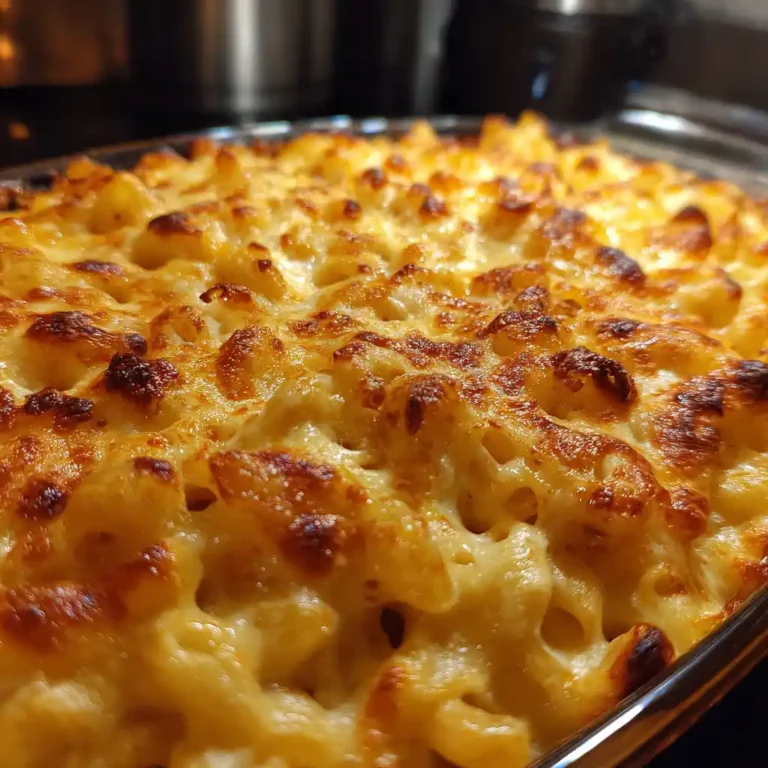
Cavatappi Pasta: The Ultimate Guide to This Spiraled Italian Favorite
Cavatappi pasta is a spiral-shaped noodle perfect for creamy sauces, cheesy bakes, and pasta salads. Loved for its shape and sauce-holding ability, it transforms meals into comforting dishes packed with flavor and heart.
- Total Time: 40 minutes
- Yield: 6 servings
Ingredients
- 1 lb cavatappi pasta
- 2 tbsp butter
- 2 tbsp all-purpose flour
- 2 cups milk
- 1 cup heavy cream
- 2 cups sharp cheddar cheese, shredded
- 1 cup mozzarella cheese, shredded
- Salt and pepper to taste
- 1 tsp paprika (optional)
- ½ cup breadcrumbs (for topping)
Instructions
- Preheat oven to 375°F (190°C).
- Cook cavatappi until al dente (about 9 minutes), then drain.
- Melt butter in saucepan, whisk in flour, and cook 1–2 minutes.
- Slowly add milk and cream, stir until thickened.
- Add cheeses, seasoning, and cooked pasta.
- Pour into a baking dish, top with breadcrumbs.
- Bake for 20 minutes until bubbly and golden.
Notes
Cavatappi’s spiral shape helps hold creamy sauces and textures well, making it perfect for bakes and salads. Pair with protein like seasoned ground beef for extra heartiness.
- Prep Time: 15 minutes
- Cook Time: 25 minutes
- Category: Main Dish
- Method: Baking
- Cuisine: Italian-American
Unique Shape and Texture of Cavatappi
How Cavatappi Pasta Differs in Structure from Other Pastas
One of the reasons cavatappi pasta stands out is its unique shape. It’s a hollow spiral, combining the ridged surface of penne with the playful twist of fusilli. This blend makes it perfect for rich, clingy sauces and heavier ingredients. Unlike macaroni, which is shorter and more curved, cavatappi pasta offers a longer, corkscrew shape that enhances texture and plate appeal.
Let’s compare some structural benefits:
| Pasta Type | Shape | Sauce Retention | Texture in Dishes |
|---|---|---|---|
| Cavatappi Pasta | Twisted, tubular | Excellent | Springy, hearty |
| Elbow Macaroni | Curved, smooth | Moderate | Soft, quick-cook |
| Fusilli | Spiral, solid | Good | Lighter, airy |
| Penne | Straight, tubular | Moderate | Firm, structured |
The hollow center and ridges of cavatappi pasta allow it to catch bits of garlic, herbs, meat, and grated cheese — making every bite flavorful and satisfying.
Why the Spiral Matters for Sauces and Dishes
That curly shape of cavatappi pasta does more than just look fun — it’s engineered for sauce. The spiral coils increase surface area, creating more space for thick or creamy sauces to hold on. It’s why this pasta is often chosen for baked dishes or stovetop meals that call for serious flavor.
When cooked properly, cavatappi pasta keeps its shape without becoming mushy, even when reheated. This makes it perfect for meal prep or dishes you want to enjoy over a couple of days. Its texture also complements both light vinaigrettes and indulgent cheese sauces — making it one of the most versatile shapes in your pantry.
Looking for inspiration? Try our gluten-free dinner ideas that pair beautifully with cavatappi pasta alternatives.
Cavatappi vs Macaroni: Key Differences
Texture and Cooking Comparison
At first glance, cavatappi pasta and elbow macaroni might seem interchangeable — both are short, curved noodles used in similar dishes like mac and cheese. But look a little closer, and you’ll notice some major differences in both texture and cooking behavior.
Cavatappi pasta is longer, thicker, and spiraled. Its tubular shape is usually ridged, which gives it a chewier, more robust bite compared to smooth macaroni. When cooked al dente, it holds its structure better, especially in baked dishes. Macaroni, on the other hand, is shorter and more compact, with a subtle curve that cooks faster but tends to soften more easily.
Here’s a quick breakdown:
| Feature | Cavatappi Pasta | Elbow Macaroni |
|---|---|---|
| Shape | Spiral, tubular | Curved, tubular |
| Surface | Usually ridged | Usually smooth |
| Cooking Time | Slightly longer (9–12 min) | Shorter (7–9 min) |
| Sauce Retention | Excellent | Good |
| Best in | Bakes, creamy sauces, pasta salads | Simple mac and cheese, soups |
Because of its durability, cavatappi pasta doesn’t get mushy, even when baked or reheated — a big advantage in meal prepping or leftovers. It also provides a more satisfying mouthfeel in rich, cheesy recipes.
Best Uses: When to Choose One Over the Other
While elbow macaroni will always have a place in classic comfort food, cavatappi pasta is often the better choice when you want your dish to feel a little elevated.
Choose cavatappi when:
- You’re baking pasta in the oven
- You want maximum sauce clinging power
- You’re making a pasta salad that won’t get soggy
- You’re looking for a hearty, chewable texture
Stick with macaroni when:
- You’re cooking a quick stovetop dish
- You want a softer bite for kids or older adults
- You’re preparing a thin broth-based soup
In essence, cavatappi pasta is macaroni’s sophisticated cousin — just as comforting, but with a bit more personality and performance. Both are great in the right setting, but if you want your sauce to shine and your pasta to stand up to the challenge, cavatappi wins every time.
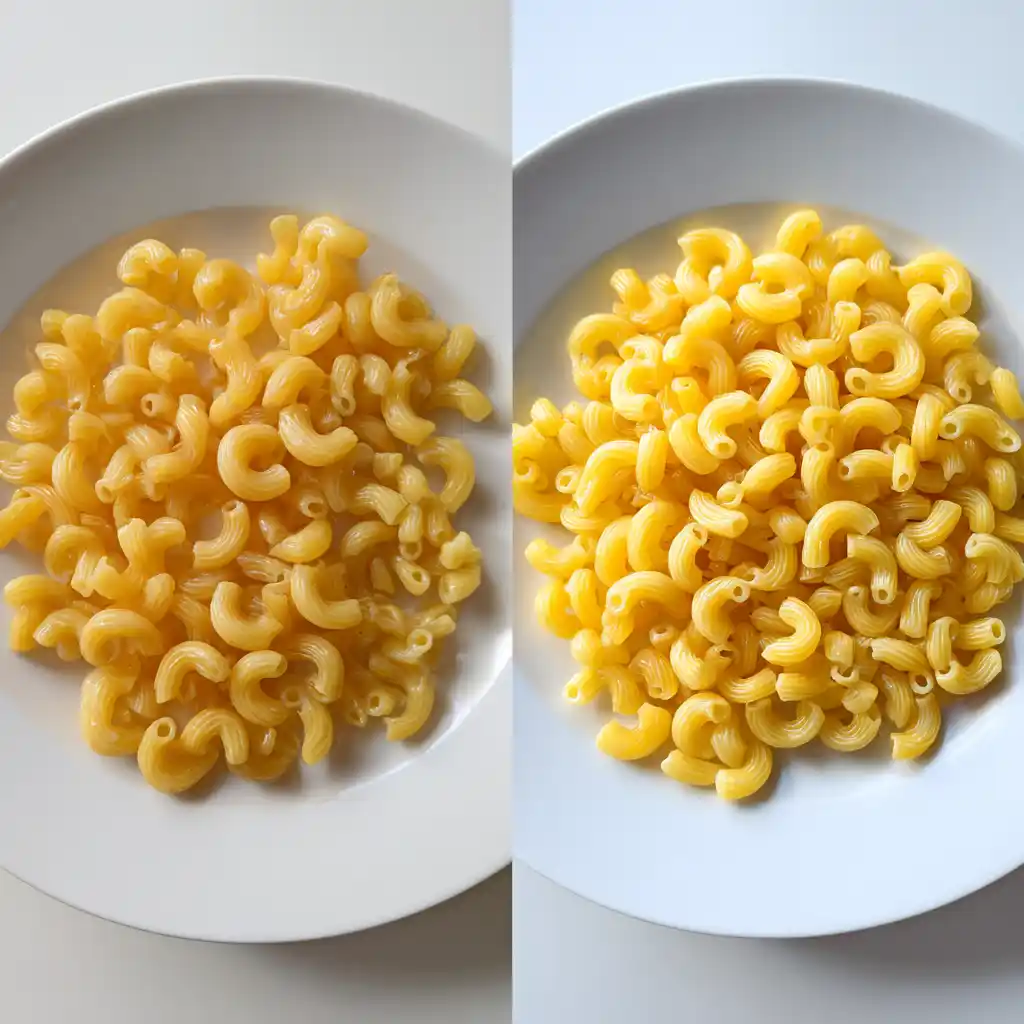
Don’t miss our easy casserole recipes for more comforting meals where cavatappi pasta works like a charm.
Health and Nutrition of Cavatappi Pasta
Is Cavatappi Pasta Healthy?
Cavatappi pasta can absolutely be part of a healthy, balanced diet — it all depends on the ingredients and how you serve it. Traditional cavatappi is made from semolina flour (derived from durum wheat), which gives it that satisfying bite and classic pasta flavor. It’s naturally low in fat, cholesterol-free, and contains a moderate amount of protein and fiber.
A single cup of cooked regular cavatappi contains:
| Nutrient | Approx. Amount |
|---|---|
| Calories | 200–220 kcal |
| Protein | 7–8g |
| Carbohydrates | 40–42g |
| Fiber | 2g |
| Fat | 1g or less |
Like most pasta types, cavatappi pasta is high in carbohydrates, which provide energy. However, portion size and balance are key — pairing it with veggies, lean protein, and healthy fats turns it from a carb-heavy dish into a nutrient-rich meal.
Whole Wheat, Gluten-Free, and High-Protein Variations
The great news? There are now plenty of cavatappi pasta alternatives that suit various diets and preferences:
- Whole wheat cavatappi: Higher in fiber and nutrients, made from whole grain durum wheat. It has a nuttier flavor and firmer bite.
- Gluten-free cavatappi: Often made from rice, corn, quinoa, or chickpeas. Perfect for people with gluten sensitivity or celiac disease.
- High-protein cavatappi: Made with lentils or pea protein. These options are ideal for athletes or those following a low-carb or high-protein diet.
- Low-carb versions: Look for cavatappi made with hearts of palm or konjac flour. These offer fewer carbs and calories for keto-friendly diets.
Each version offers a different texture and flavor, but all still maintain the signature spiral shape that defines cavatappi pasta.
Here’s a quick comparison table:
| Type | Best For | Notes |
|---|---|---|
| Traditional (semolina) | Classic flavor & texture | Not gluten-free |
| Whole wheat | Higher fiber intake | Slightly more dense |
| Gluten-free | Celiac or gluten-sensitive eaters | Can be softer, varies by brand |
| High-protein | Athletes or low-carb eaters | Heavier texture, good for satiety |
So yes — cavatappi pasta can absolutely be healthy. It’s all about choosing the right type and pairing it with nourishing ingredients. Whether you’re enjoying a vibrant veggie-packed pasta salad or a cheesy baked dish, this pasta can fit your lifestyle.
Learn more about healthy cooking swaps in our low-calorie recipes collection, perfect for balancing comfort and nutrition.
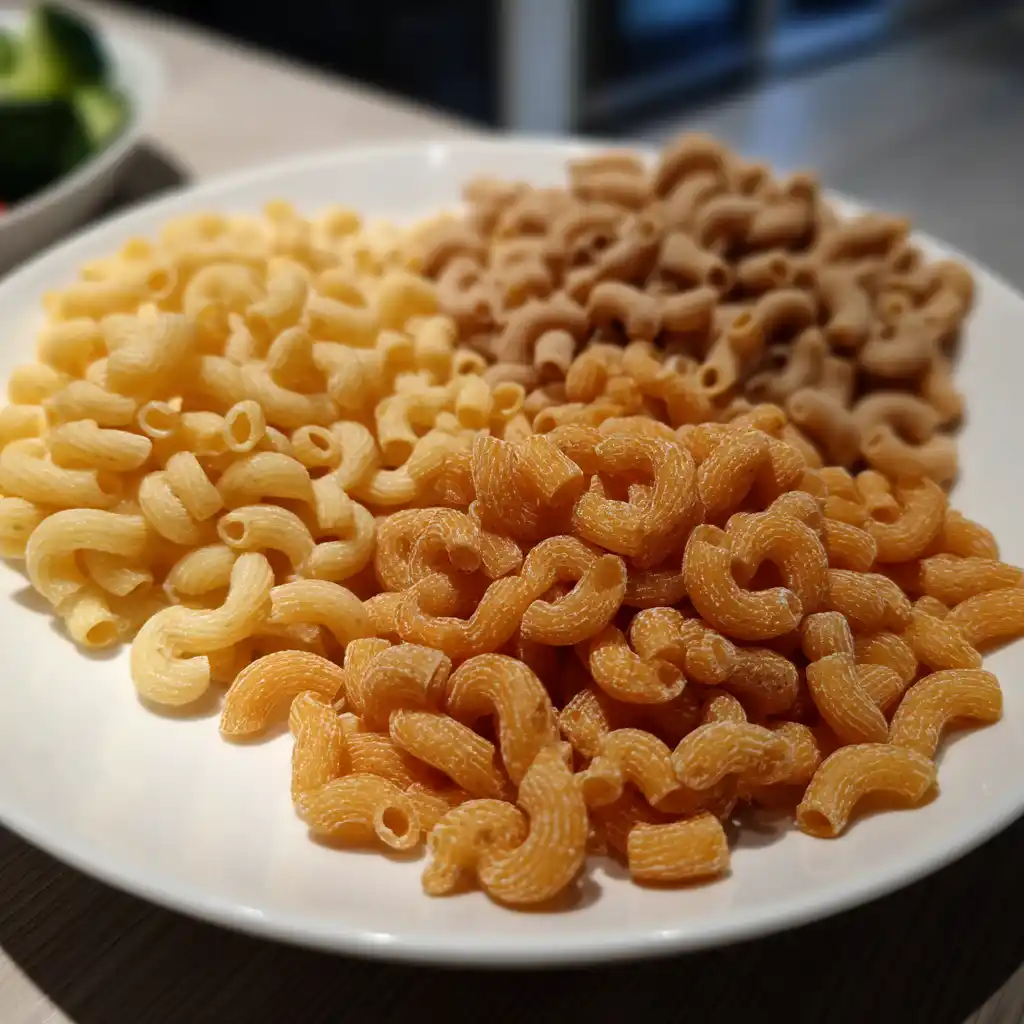
How to Cook Cavatappi Perfectly
Cooking Times and Water Ratio
Cooking cavatappi pasta the right way makes all the difference between a memorable meal and a mushy mess. Luckily, it’s simple when you follow a few golden rules.
First, always use plenty of water — about 4 to 6 quarts per pound of pasta. This prevents sticking and helps the pasta cook evenly. Salt the water generously (roughly 1 tablespoon per 4 quarts). It should taste like the sea — that’s your only chance to season the pasta from the inside.
Bring the water to a rolling boil before adding your cavatappi pasta, then stir immediately to separate the spirals. Most cavatappi takes 9 to 12 minutes to cook to al dente, depending on the brand and whether it’s regular, whole wheat, or gluten-free.
Here’s a general timing guide:
| Type of Cavatappi Pasta | Cooking Time |
|---|---|
| Regular (semolina) | 9–11 minutes |
| Whole Wheat | 10–12 minutes |
| Gluten-Free | 7–9 minutes |
| High-Protein | 8–10 minutes |
Pro Tip: Don’t rely solely on the package — taste-test the pasta about 2 minutes before the suggested time. You’re looking for a bite that’s tender on the outside with a slight chew in the center.
Tips to Prevent Stickiness and Overcooking
Because cavatappi pasta has a spiral shape, it’s naturally less likely to clump. But to keep things perfect:
- Stir occasionally: Especially in the first 2 minutes to stop spirals from sticking together.
- Don’t overcook: Cavatappi becomes mushy quickly if left in water too long.
- Save pasta water: Reserve ½ cup before draining — it’s liquid gold for sauces.
- Rinse only for cold dishes: Never rinse your pasta unless it’s for a salad. Rinsing removes the starch that helps sauces stick.
Whether you’re prepping for a cheesy baked dish or a fresh salad, cooking cavatappi pasta to perfection is your first step toward a delicious result.
Don’t miss our chicken stir fry recipe for a great protein-packed pairing with cooked cavatappi pasta.
Cavatappi Recipes to Try at Home
Cavatappi pasta is one of those rare shapes that works beautifully in both creamy and fresh dishes — making it a favorite for home cooks everywhere. Whether you’re craving something indulgent and cheesy or light and wholesome, these two go-to recipes are easy, versatile, and full of flavor.
Classic Cheesy Baked Cavatappi
This comfort food favorite is a guaranteed crowd-pleaser. The spiral shape of cavatappi pasta holds onto the creamy cheese sauce and gets beautifully golden on top.
Ingredients:
- 1 lb cavatappi pasta
- 2 tbsp butter
- 2 tbsp all-purpose flour
- 2 cups milk (whole or 2%)
- 1 cup heavy cream
- 2 cups sharp cheddar cheese, shredded
- 1 cup mozzarella cheese, shredded
- Salt and pepper to taste
- 1 tsp paprika (optional)
- ½ cup breadcrumbs (for topping)
Instructions:
- Preheat your oven to 375°F (190°C).
- Cook cavatappi pasta until al dente (about 9 minutes), then drain.
- In a saucepan, melt butter, whisk in flour, and cook 1–2 minutes.
- Slowly add milk and cream, stirring until thick.
- Stir in cheeses, seasoning, and cooked pasta.
- Pour into a baking dish, top with breadcrumbs, and bake for 20 minutes until bubbly.
Looking for inspiration? Try this with our healthy ground beef recipes by layering in seasoned meat.
Mediterranean Cavatappi Pasta Salad
A lighter twist, this cold cavatappi pasta dish is full of fresh veggies and zesty flavors. It’s perfect for picnics, potlucks, or weekday lunches.
Ingredients:
- 12 oz cavatappi pasta
- 1 cup cherry tomatoes, halved
- 1 cup cucumber, diced
- ½ red onion, thinly sliced
- ½ cup Kalamata olives, pitted and halved
- ½ cup feta cheese, crumbled
- 3 tbsp olive oil
- Juice of 1 lemon
- 1 tsp dried oregano
- Salt and pepper to taste
- Fresh parsley (optional garnish)
Instructions:
- Cook cavatappi pasta and rinse under cool water.
- In a large bowl, combine pasta, veggies, olives, and feta.
- Whisk olive oil, lemon juice, oregano, salt, and pepper into a quick dressing.
- Pour over the salad and toss well. Chill before serving.
This dish can be made 1–2 days in advance and still tastes fantastic, thanks to the pasta’s spiral shape holding onto all that lemony goodness.
Discover great ideas like our cucumber tomato salad — another vibrant side dish that pairs perfectly with this pasta salad.
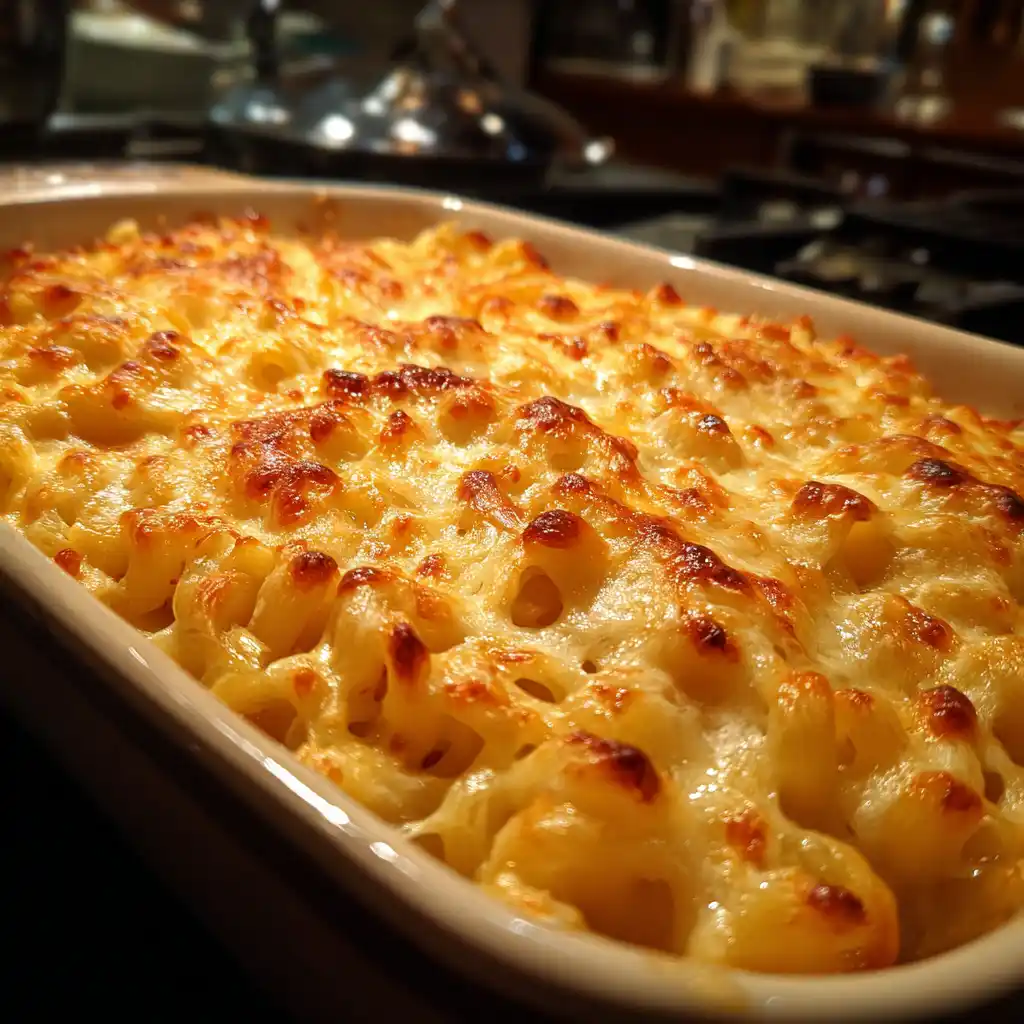
Best Sauces for Cavatappi Pasta
Cavatappi pasta isn’t just loved for its fun spiral shape — it’s a sauce magnet. Those curves and ridges cling to every drop of flavor, turning even simple sauces into restaurant-worthy bites. But which sauces bring out the best in cavatappi? Let’s break it down.
Creamy vs Tomato-Based Sauces
Creamy Sauces:
Cavatappi shines in creamy, rich sauces. Think cheddar cheese, Alfredo, four-cheese blends, or even a spicy Cajun cream. The hollow shape of cavatappi pasta traps the sauce inside, while the ridged outside gives extra surface grip — meaning more flavor in every forkful.
Try it with:
- Classic mac & cheese sauce
- Creamy garlic Parmesan sauce
- Cajun cream with shrimp or chicken
- Creamy pesto or spinach Alfredo
Don’t miss our baked chicken wings guide — a perfect protein to pair with creamy cavatappi pasta dishes.
Tomato-Based Sauces:
Don’t overlook tomato sauces either. Cavatappi pasta holds up beautifully to hearty marinara, arrabbiata, or meat sauces. Its thicker structure means it won’t go limp or fall apart — even when simmered or baked.
Great tomato-based options include:
- Rustic marinara with roasted vegetables
- Bolognese with ground turkey or beef
- Tomato and basil with mozzarella pearls
- Spicy arrabbiata for heat lovers
The result is a balanced, satisfying pasta bowl that’s rich in taste and texture.
Pairing Flavors with the Pasta’s Texture
Because cavatappi pasta has a firm bite and hearty feel, it pairs best with bold, flavorful ingredients. The key is to balance texture with taste — creamy sauces offer richness, while tomato sauces bring acidity and brightness.
Here’s a flavor guide:
| Sauce Type | Best Flavors to Add |
|---|---|
| Cheese-based | Smoked gouda, sharp cheddar, Gruyère |
| Tomato-based | Basil, garlic, capers, sun-dried tomatoes |
| Pesto | Pine nuts, spinach, grilled chicken |
| Spicy/Creamy | Cajun spices, sausage, bell peppers |
You can also get creative with fusion sauces — try a Thai-inspired peanut sauce or a smoky chipotle cheese blend. Cavatappi pasta can handle it all.
Don’t miss our grilled mahi mahi guide — ideal to serve over a bed of creamy cavatappi for a seafood twist.
Cavatappi Pasta Substitutes
What is the Closest Pasta to Cavatappi?
If you’re out of cavatappi pasta but craving that same texture and sauce-holding ability, don’t worry — there are several close alternatives that can deliver a similar experience. The best substitutes mimic its spiral shape, hollow tube structure, or sturdy texture.
Here are the top cavatappi pasta substitutes, and when to use them:
| Substitute Pasta | Best Used For | Texture Match | Holds Sauce Well? |
|---|---|---|---|
| Fusilli | Pasta salads, light tomato sauces | Medium | Good |
| Rotini | Bakes, creamy dishes | Medium-high | Very good |
| Elbow Macaroni | Mac & cheese, soups | Low-medium | Moderate |
| Penne Rigate | Bakes, chunky tomato sauces | Medium | Good |
| Gemelli | Light pesto, oil-based sauces | Medium | Moderate |
When to Use Rotini, Fusilli, or Elbow Macaroni Instead
Rotini and fusilli are the closest visual and functional matches to cavatappi pasta. Their twisted shapes aren’t tubular, but they still offer good surface area to hold sauces — especially cream- and cheese-based ones. Use them when making pasta bakes or cold salads.
Elbow macaroni, while a bit smaller and simpler, can step in for stove-top mac & cheese or soups. It cooks quickly and is very familiar, making it a kid-friendly option.
Penne rigate, with its ridged, tube shape, works especially well in baked casseroles or when tossed with chunky sauces like ragù. It’s less twisty than cavatappi, but the sauce-holding power is strong.
And finally, gemelli, a double-helix-looking pasta, offers a unique presentation and similar firmness in lighter dishes.
Choosing the Right Substitute Based on Texture and Sauce
If you’re choosing a replacement for cavatappi pasta, think about what you’re making. Is the dish baked? Creamy? Served cold? That will help you pick the best alternative.
Here’s a quick cheat sheet:
- For mac & cheese → Rotini or elbow macaroni
- For pasta salads → Fusilli or gemelli
- For casseroles and bakes → Penne rigate or rotini
- For tomato-based dishes → Fusilli or penne
While no pasta exactly replicates the magic of cavatappi pasta, these swaps will still help your meal shine.
Discover great ideas like our easy casserole recipes that work perfectly with cavatappi or its top substitutes.
Where to Buy and Store Cavatappi Pasta
Supermarket and Online Sources
Luckily, cavatappi pasta is widely available — you just have to know where to look. Most major grocery chains in the U.S., such as Kroger, Whole Foods, Safeway, and Walmart, carry cavatappi under various brands. You’ll typically find it in the same aisle as macaroni, penne, and rigatoni.
Look for popular brands like:
- Barilla – offers classic and whole wheat cavatappi
- De Cecco – authentic Italian texture and flavor
- 365 by Whole Foods – great organic and gluten-free options
- Banza – chickpea-based, high-protein cavatappi
Online, cavatappi pasta is even easier to track down. You can buy in bulk or try specialty versions like organic, lentil-based, or imported Italian varieties.
Top places to buy cavatappi online:
- Amazon – bulk sizes, gluten-free, and premium options
- Thrive Market – organic, plant-based alternatives
- Instacart – local delivery from your favorite supermarket
- Italian specialty stores – for artisanal or bronze-cut pasta
If your store doesn’t carry it, ask the manager — many are happy to order it upon request.
Proper Storage and Shelf Life
Like most dried pasta, cavatappi pasta has a long shelf life — usually around 1 to 2 years if stored correctly. The key is to keep it dry, airtight, and cool.
Storage Tips:
- Store in its original sealed package or transfer to a glass or BPA-free plastic container.
- Keep in a dark pantry or cabinet, away from heat or moisture.
- Avoid refrigerating dry pasta — the humidity shortens shelf life.
- Always check the expiration date before cooking.
Cooked cavatappi pasta can be stored in the refrigerator for up to 5 days in an airtight container. Add a little olive oil to prevent sticking, especially if storing plain pasta.
You can also freeze cooked cavatappi in portions for up to 2 months. Just thaw overnight in the fridge and reheat with a splash of broth, sauce, or water.
By storing it properly, you’ll always be ready to whip up a comforting meal with cavatappi pasta anytime the craving hits.
Don’t miss our healthy meal prep guide to make the most out of bulk pasta cooking and storage.
Frequently Asked Questions About Cavatappi Pasta
What kind of pasta is a cavatappi?
What is the difference between macaroni and cavatappi?
Is cavatappi pasta healthy?
What is the closest pasta to cavatappi?
Conclusion
Whether you’re planning a hearty baked casserole or a fresh pasta salad, cavatappi pasta brings the perfect mix of texture, versatility, and sauce-loving power to any dish. Its spiral shape isn’t just fun to look at — it’s engineered for flavor, delivering comfort and satisfaction in every bite.
From understanding its origins and cooking it just right, to choosing health-conscious versions and knowing which substitutes to use, this guide has given you everything you need to make cavatappi pasta a go-to in your kitchen.
As someone who grew up with food as a way to connect, I hope these tips and recipes help bring that same joy to your table. Now that you’ve mastered the spiral, what will you cook next?
Check out our vegan recipes guide for plant-based ideas that pair beautifully with cavatappi pasta dishes.
For more recipe inspiration and visual guides, check out our curated boards on Pinterest.

